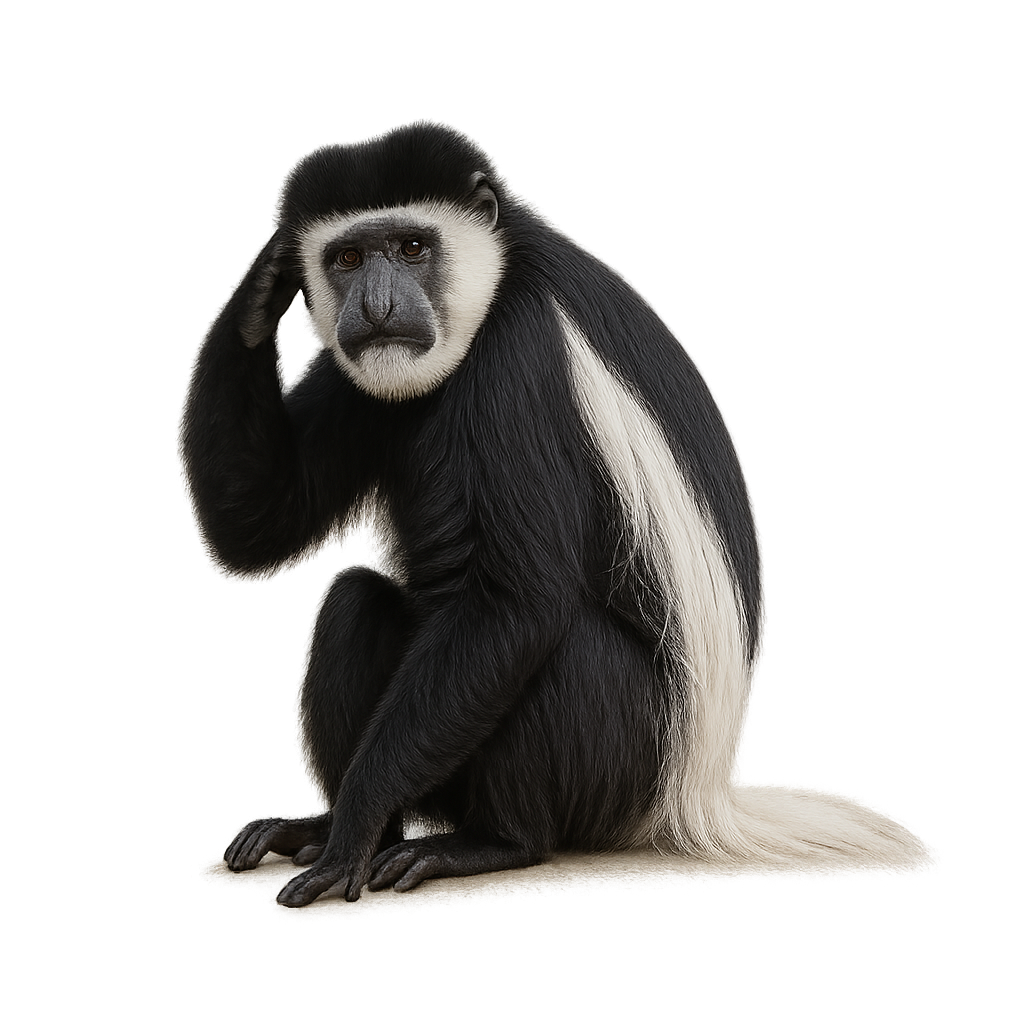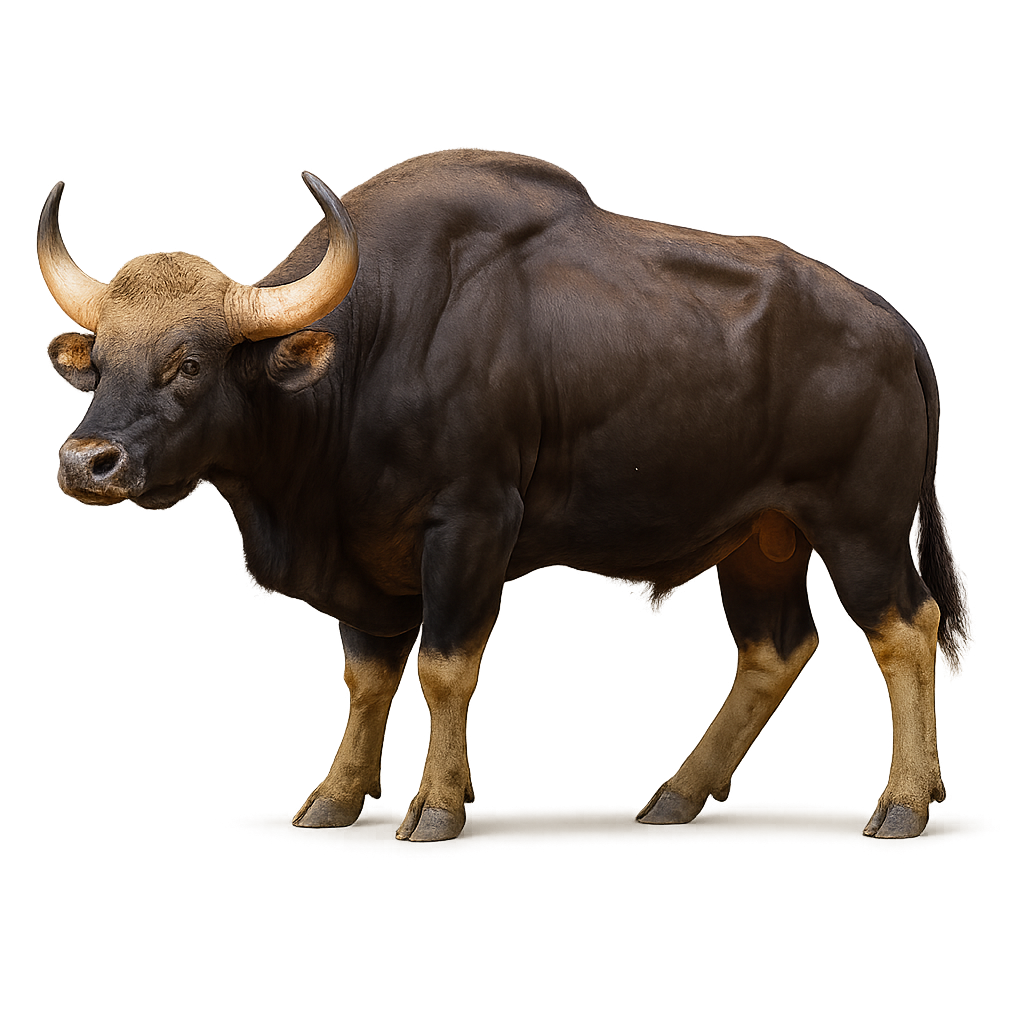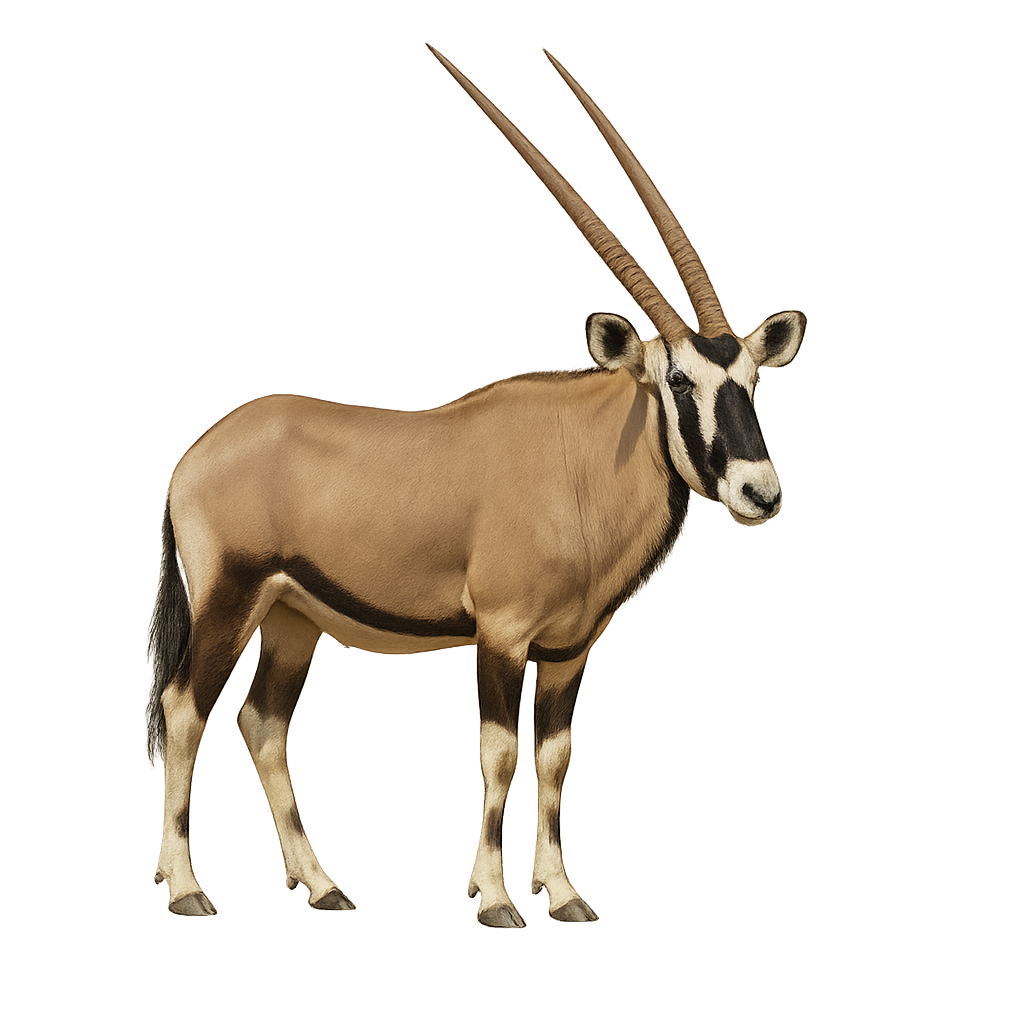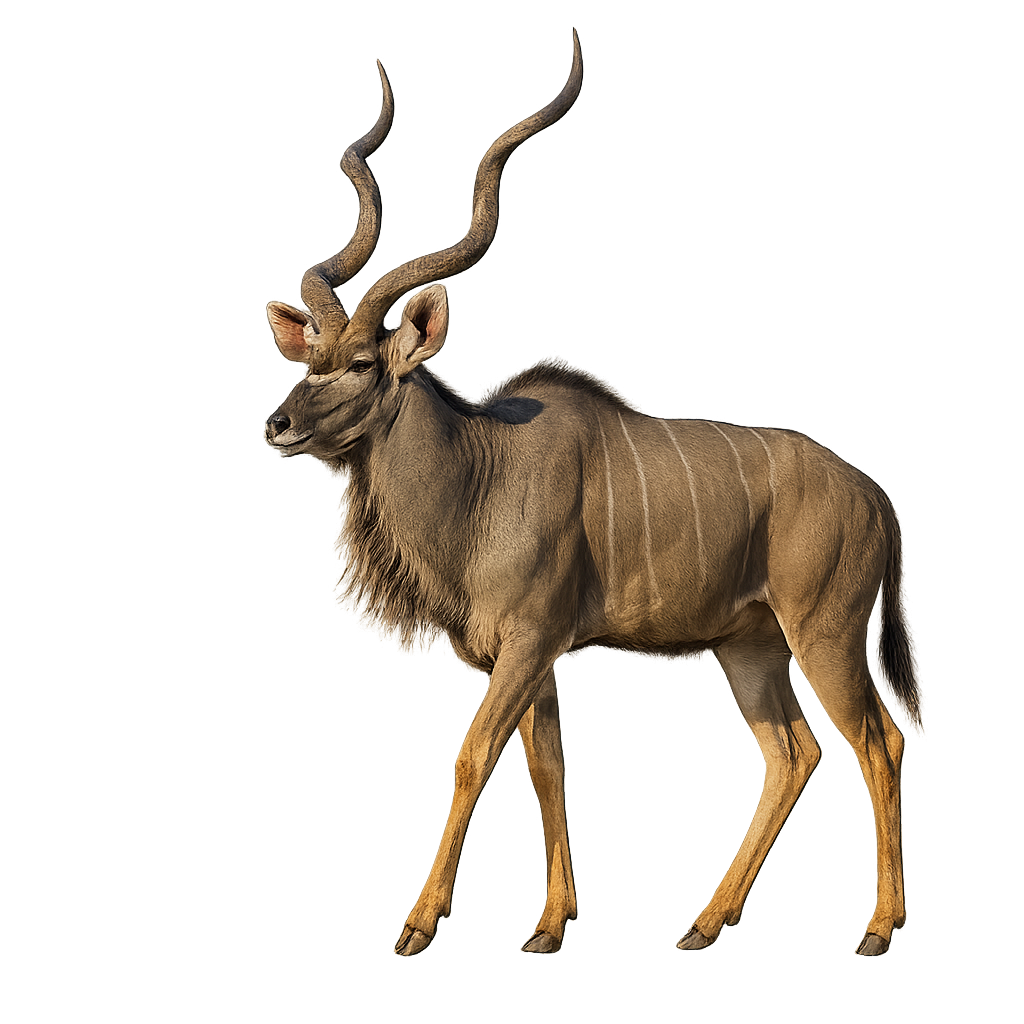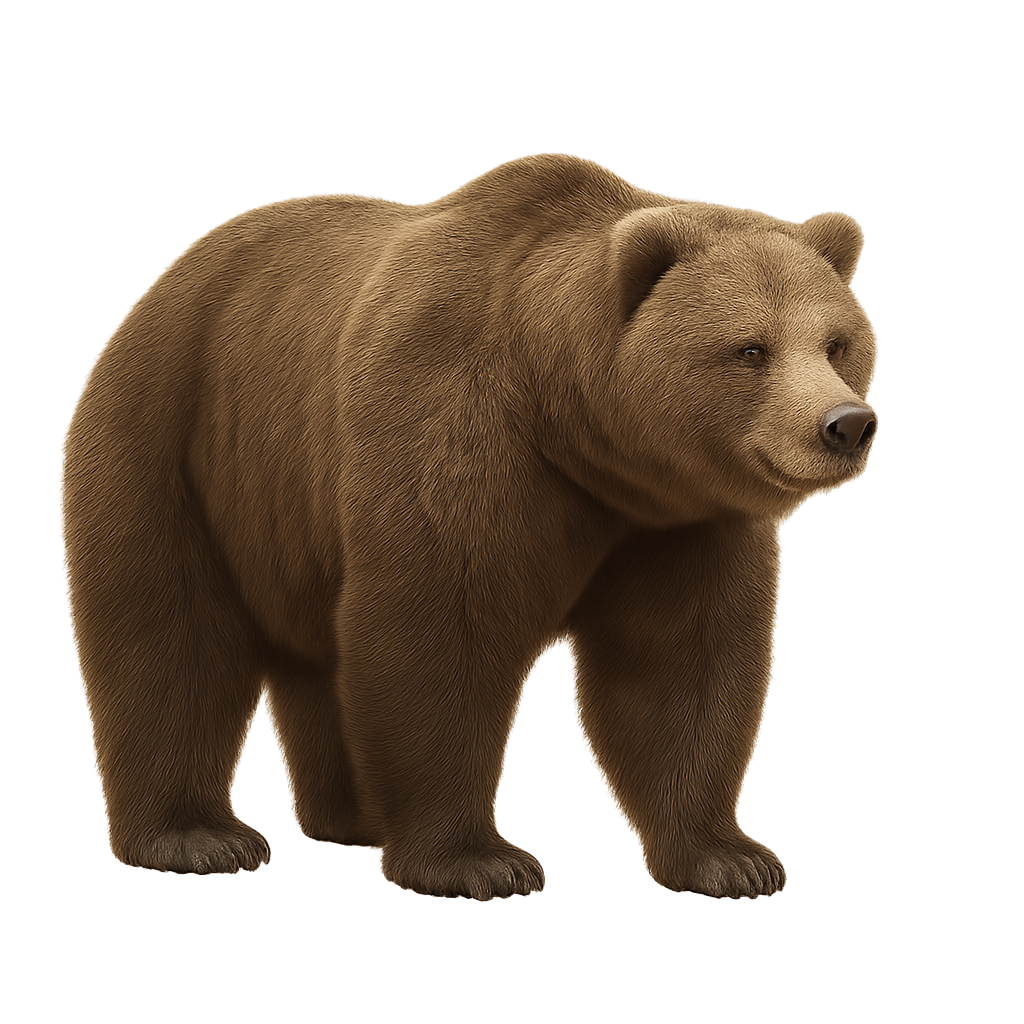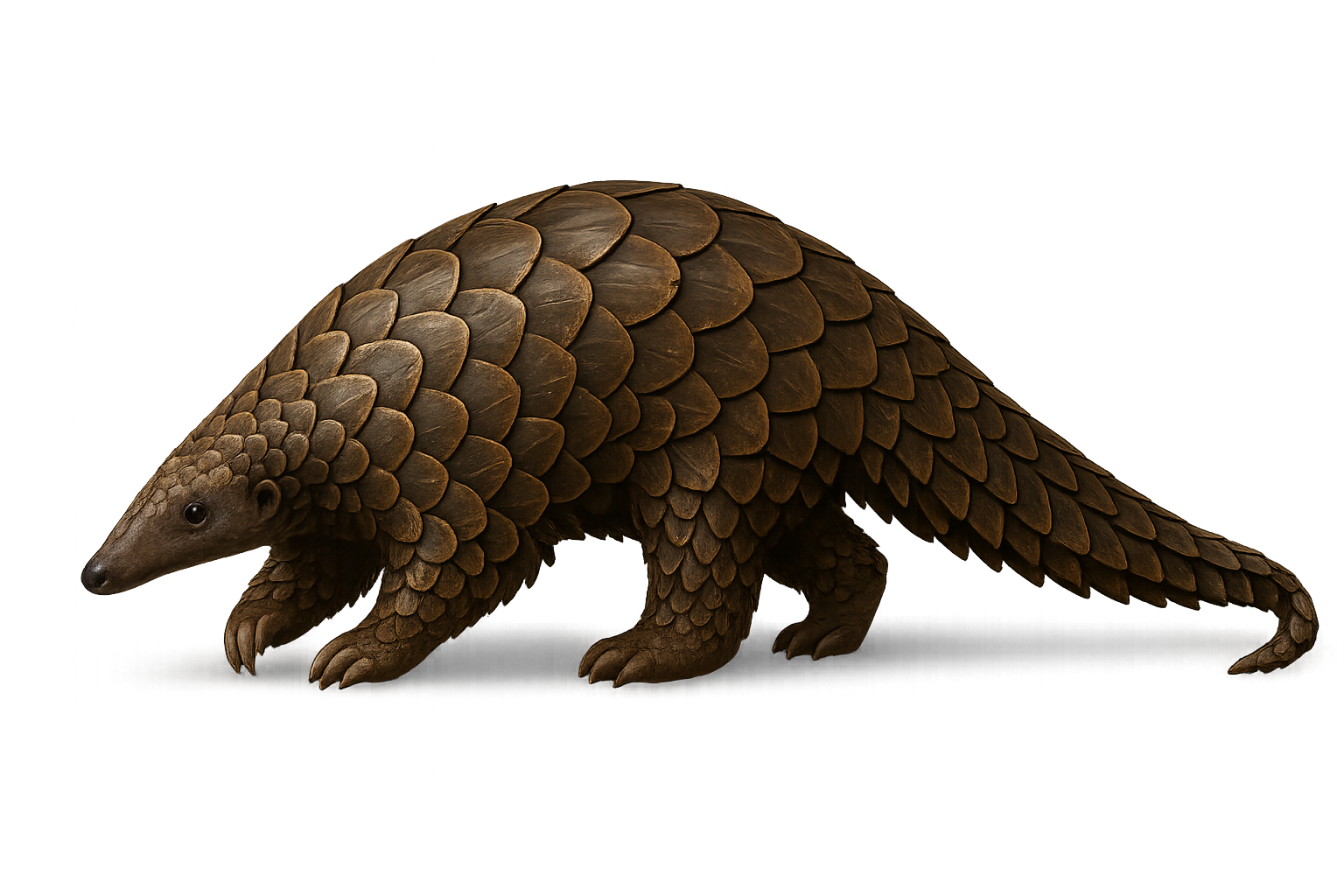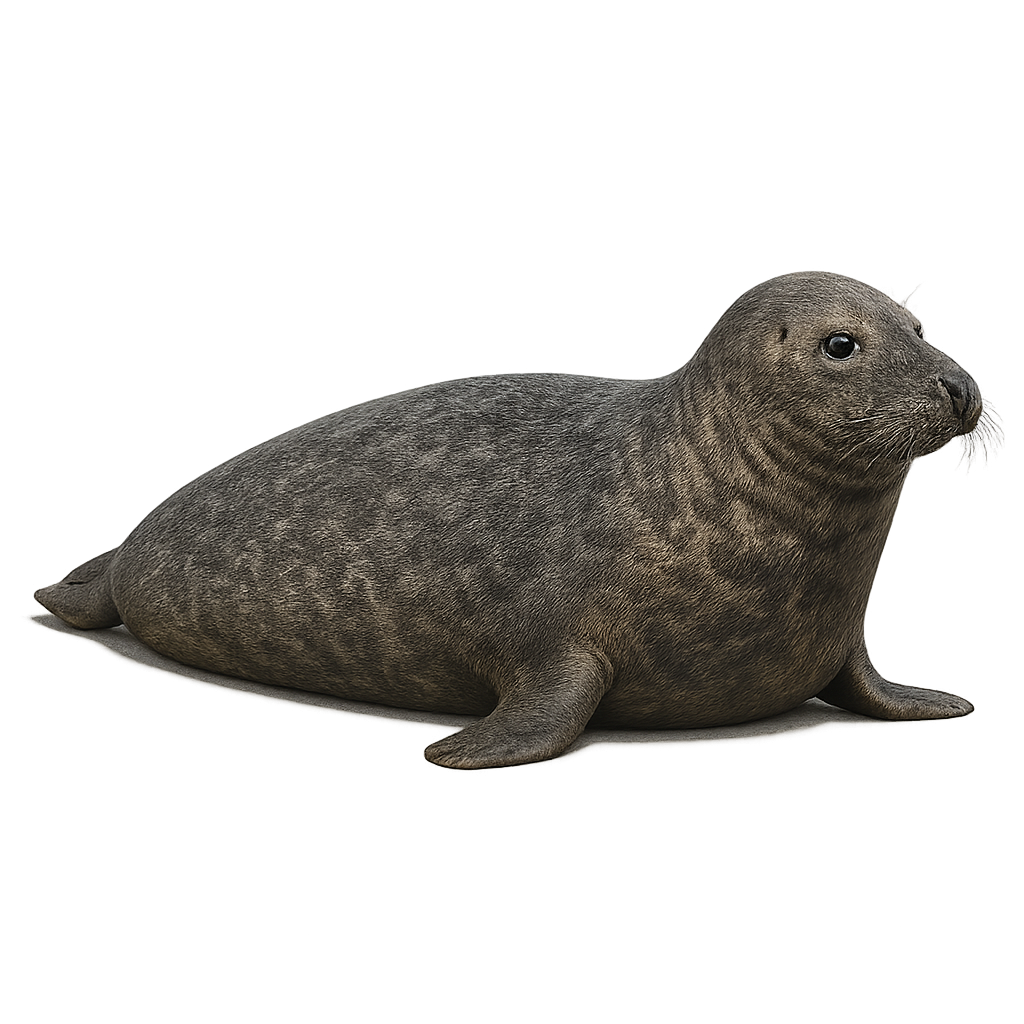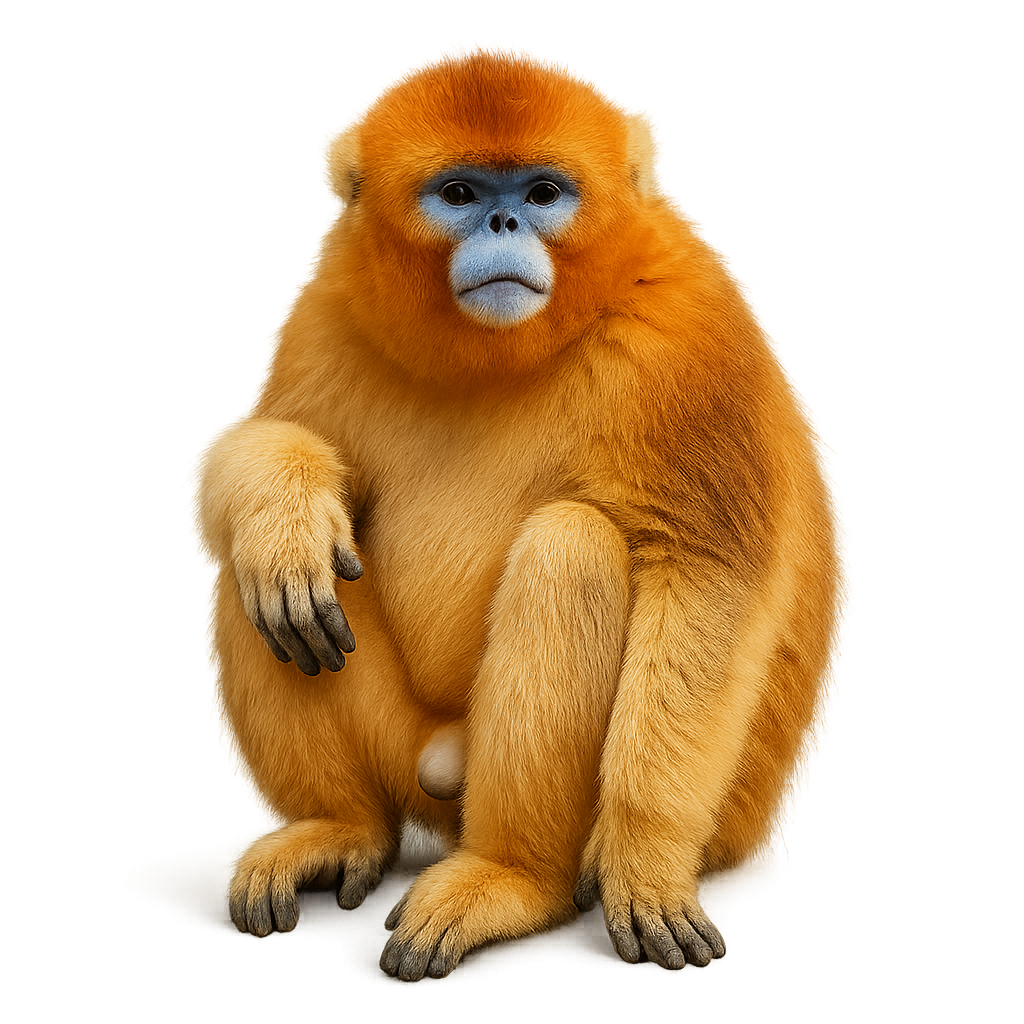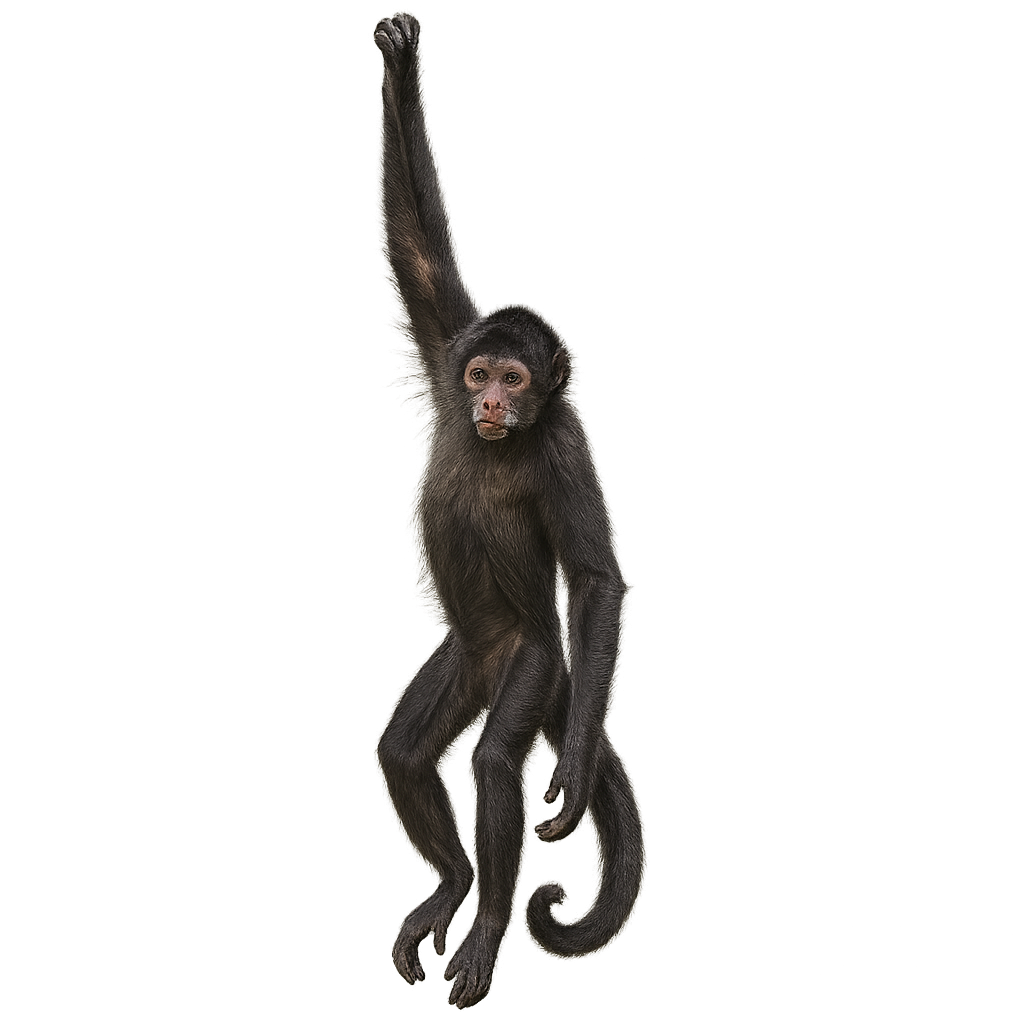Animal Species Profiles:
Mammals, Birds, Reptiles & More
Explore wildlife from around the world with the species profiles on WildlifePhotographer. Mammals, birds, reptiles… For each species, you’ll find key information such as habitat, observation periods, distribution, and photography tips. Want more details and advanced features? Download the full app for the complete experience.
Greenland whale
Balaena mysticetus
The Greenland whale is one of the largest baleen whales, with a size that can reach 16 to 18 meters. It lives in the icy waters of the Arctic and primarily feeds on krill and small fish, filtering them through its baleen plates. It is a long-lived animal, with a lifespan that can exceed 200 years. While protected, it is threatened by climate change, pollution, and ship collisions.
Golden Jackal
Canis aureus
The Golden Jackal is a small canid found primarily in South Asia, the Middle East, and Southeastern Europe. It is easily recognizable by its golden fur, which ranges from pale yellow to golden brown, allowing it to blend into the landscapes of grasslands, open forests, and savannas. The Golden Jackal has a more slender body and relatively long legs compared to other jackals, enabling it to be an excellent runner.
Opportunistic by nature, the Golden Jackal feeds on a wide variety of prey, ranging from small mammals and birds to fruits and carrion. Although often solitary or in small family groups, the Golden Jackal can occasionally be seen in larger groups while foraging for food. It is also known for its varied vocalizations and skilled hunting behavior. While its population remains relatively stable, it faces threats such as habitat loss and human conflict.
Guereza colobus
Colobus guereza
The Guereza Colobus is a large primate belonging to the family Cercopithecidae, easily recognized by its distinctive black and white fur. It has a white mane around its face, white limbs, and a long, bushy tail that helps it stabilize in the trees. Its black body is contrasted by tufts of white fur along the sides and back, making it one of the most elegant primates of the forest. It primarily lives in the tropical and subtropical forests of East Africa, spending most of its time in the trees.
The Guereza Colobus is primarily herbivorous, feeding on leaves, fruits, seeds, and flowers. With its specialized stomach, it can digest tough, fibrous leaves that other animals cannot consume. It lives in social groups led by a dominant male and is generally very calm, moving gracefully and agilely through the forest canopy. Although its population remains stable in some protected areas, it faces threats due to deforestation and hunting, causing some populations to be classified as vulnerable.
Giant Eland
Tragelaphus derbianus
The Giant Eland, or Tragelaphus derbianus, is a large, robust, and majestic antelope, easily recognizable by its spiral-shaped horns, present only in males. It measures between 1.4 and 1.7 meters at the shoulder and can reach a length of 2.5 to 3 meters, including its tail. Its weight ranges between 600 and 1,000 kg, making it one of the largest antelopes. Its coat is generally light brown to gray, with white markings on the belly and throat. The Giant Eland primarily inhabits open savannas, light forests, and mountainous regions in Central and West Africa, mainly in the Democratic Republic of Congo, Cameroon, Gabon, and Angola. Herbivorous, the Giant Eland primarily feeds on grasses, leaves, and fruits, and it is capable of consuming a wide variety of vegetation, allowing it to adapt to different environments. It is a social animal that lives in family groups or small herds. While the species is classified as of least concern, it is threatened by habitat loss and hunting.
Gaur
Bos gaurus
The Gaur is a large bovine, considered one of the most impressive species of wild cattle. It stands between 1.8 and 2 meters at the withers and can weigh from 500 to 1,000 kg, with males generally being larger and heavier than females. Its coat is dark, typically black or dark brown, with light markings on the legs and a distinctive mane around the neck. The Gaur primarily inhabits dense forests and mountains in South and Southeast Asia, especially in India, Nepal, Indonesia, and Malaysia. Herbivorous, it primarily feeds on grasses, young shoots, leaves, and fruits. The Gaur is a social animal, living in groups, although it is often observed alone or in small groups while foraging. Due to hunting, habitat loss, and conflicts with human populations, the Gaur is listed as vulnerable by the International Union for Conservation of Nature (IUCN).
Grant’s Gazelle
Nanger granti
The Grant's Gazelle is an elegant, medium-sized antelope, easily recognizable by its long legs and generally sandy-colored coat with distinctive markings. It stands about 75 cm at the withers and weighs between 40 and 60 kg. The coat of the Grant's Gazelle is primarily beige with darker vertical stripes along the flanks and a black stripe running across its back. Adult males have long, slightly curved horns in the shape of a lyre, while females generally lack them. This gazelle primarily inhabits savannas, grasslands, and wooded areas in East Africa, particularly in Kenya, Tanzania, and Uganda. Herbivorous, it primarily feeds on herbaceous plants, leaves, fruits, and bark. Very fast and agile, the Grant's Gazelle can reach speeds of up to 80 km/h, allowing it to escape many predators. Although the species is not endangered, it faces threats such as habitat loss, hunting, and competition with livestock for food resources.
Gemsbok
Oryx gazella
The Gemsbok is a large, sturdy antelope native to the arid regions of Southern Africa. It stands between 1.2 and 1.5 meters at the withers and weighs between 200 and 250 kg. Its coat is primarily gray or beige, with white markings on the belly, legs, and face, giving it a distinctive appearance. It has long, straight horns, which can reach up to 1 meter in length, and are characteristic of the species. The Gemsbok inhabits savannas, steppes, and deserts, where it feeds primarily on herbaceous plants, roots, and fruits. It is well adapted to extreme heat and drought conditions, thanks to its ability to reduce its body temperature and feed on sparse vegetation. While the Gemsbok is capable of surviving in desert environments, it is also able to travel long distances in search of food and water. The species is not currently endangered, but it faces threats related to habitat loss and hunting.
Gerenuk
Litocranius walleri
The Gerenuk is a unique species of antelope from East Africa, recognizable by its long neck and graceful posture. It lives in savannas and semi-deserts, where it primarily feeds on shrubs and tree leaves. The Gerenuk is an excellent climber, capable of standing on its hind legs to reach high vegetation. This ability allows it to feed efficiently and avoid competition with other ground-dwelling herbivores. Although relatively discreet, the Gerenuk is threatened by habitat loss and poaching.
Gibbon
Hylobatidae
Gibbons, members of the Hylobatidae family, are primates particularly known for their agility and their ability to move through the canopy. They are the smallest of the great apes, measuring between 40 and 70 cm in height, with long, powerful arms that can reach up to 2.5 times the length of their body. Their weight typically ranges from 5 to 15 kg, depending on the species. Gibbons are primarily known for their mode of locomotion called "brachiation," where they move by swinging from branch to branch at impressive speeds, often at high altitudes. Their fur is typically dense, varying in color from black to light brown, and some species have distinct facial markings. Gibbons primarily inhabit the tropical forests of Southeast Asia, where they feed mainly on fruits, leaves, and small insects. These primates are social and typically live in small family groups. While gibbons are not all at immediate risk, several species are endangered due to habitat loss, poaching, and the illegal wildlife trade.
Greater Kudu
Tragelaphus strepsiceros
The Greater Kudu is an elegant, large antelope, easily recognized by its long, slender legs, streamlined body, and impressive spiral-shaped horns. It stands between 1.3 and 1.6 meters at the withers, with males weighing between 190 and 270 kg, and females weighing between 120 and 180 kg. Its coat is light gray to brown, with vertical white stripes on the body, which help it blend into forests and savannas. Males have long, spiral-shaped horns that can reach up to 1.5 meters in length, while females lack horns. The Greater Kudu primarily inhabits open forests, wooded areas, and savannas of sub-Saharan Africa, notably in East and Southern Africa. Herbivorous, it feeds mainly on leaves, bark, and fruits. This antelope is rather discreet and shy, typically living alone or in small family groups. While it is not currently in immediate danger, the Greater Kudu is threatened by habitat loss and hunting.
Grizzly bear
Ursus arctos horribilis
The Grizzly Bear is a subspecies of the brown bear, imposing and robust, often considered one of the most powerful land predators in North America. It measures between 2 and 3 meters in length, with a shoulder height ranging from 1 to 1.5 meters, and weighs between 200 and 680 kg, with males generally being larger than females. Its fur is dense and can range from light to dark brown, sometimes with silver hues that give it a grizzled appearance. The Grizzly primarily inhabits forests, mountains, and prairie areas in North America, notably in Alaska, Canada, the Rocky Mountains, and U.S. national parks like Yellowstone. Omnivorous, it primarily feeds on berries, roots, fish, but also small mammals and sometimes animal carcasses. While feared due to its size and strength, the Grizzly is a shy animal and prefers to avoid human contact. The species is protected in many regions, although its population is still threatened by habitat loss, illegal hunting, and conflicts with humans.
Gray wolf
Canis lupus
The Gray Wolf is a large carnivore, often considered the ancestor of all modern subspecies of wolves. It measures between 1.2 and 1.8 meters in length, with a tail of 30 to 50 cm, and weighs between 25 and 40 kg, though some individuals can reach 70 kg. Its coat is typically gray, but it can also include shades of white, brown, and black depending on the region and season. The Gray Wolf lives in a variety of habitats, from deep forests to tundra regions, and from mountains to plains. It is a social predator that lives in packs, cooperating with other members of its group to hunt prey such as deer, elk, bison, and other large mammals. The Gray Wolf plays an essential role in ecosystem balance by regulating herbivore populations. Although it is protected in many areas, it remains threatened by habitat loss, hunting, and conflicts with humans.
Giant Panda
Ailuropoda melanoleuca
The Giant Panda is a large mammal native to the mountains of China, primarily found in the regions of Sichuan, Shaanxi, and Gansu. It measures between 1.2 and 1.8 meters in length and weighs between 70 and 160 kg. What distinguishes it is its black and white coat, with black patches around its eyes, ears, and paws. The Giant Panda is a strict herbivore, feeding almost exclusively on bamboo, although it may occasionally eat fruits, roots, and small animals. It lives in bamboo forests, where it spends most of its day feeding due to the low nutritional value of its diet. The Giant Panda is a symbol of conservation due to its rarity, and although it is still considered vulnerable, conservation efforts have helped stabilize its population.
Ground Pangolin
Smutsia temminckii
The Temminck's Pangolin is a small insectivorous mammal found primarily in Sub-Saharan Africa, notably in South Africa, Botswana, Namibia, and Zimbabwe. It measures about 50 to 60 cm in length, with a tail that makes up a significant portion of its size, and weighs between 3 and 7 kg. This pangolin is covered with large scales made of keratin, which protect it from predators. When threatened, it curls into a ball with its scales rolled outward. It primarily feeds on termites and other insects, which it captures with its long, sticky tongue. Although the Temminck's Pangolin is an excellent burrower, it is unfortunately threatened by poaching for its scales and by habitat loss.
Giant Pangolin
Smutsia gigantea
The Giant Pangolin is the largest of the pangolin species, measuring between 1.2 and 1.5 meters in length, with a tail that can account for up to half of its total length. It weighs between 30 and 40 kg. This mammal, covered in large keratin scales, primarily lives in the forests of Central Africa, particularly in the Democratic Republic of the Congo and the Republic of the Congo. It is an excellent burrower and primarily feeds on termites and other insects, which it captures with its long tongue. The Giant Pangolin is a nocturnal and solitary species, using its powerful claws to dig burrows or open insect nests. Although its population is not well-known, the Giant Pangolin is threatened by deforestation, illegal hunting, and poaching for its scales, making it a vulnerable species.
Grey Seal
Halichoerus grypus
The Gray Seal, also known as the Horsehead Seal, is a species of seal found in the coastal waters of the North Atlantic, particularly in Europe and North America. It measures between 2 and 3 meters in length and weighs between 170 and 300 kg. Its fur is typically silver-gray with black spots, and its head is characterized by a wide and elongated snout. The Gray Seal primarily feeds on fish, but also on crustaceans and cephalopods. It spends a lot of time on beaches and rocks for resting and breeding. Although it is not currently threatened, it can be affected by marine pollution, ship collisions, and human disturbance.
Greater One-horned Rhinoceros
Rhinocéros unicornis
The Indian Rhinoceros, also known as the one-horned rhinoceros, is a large species of rhinoceros found primarily in the Indian subcontinent, particularly in India, Nepal, Bangladesh, and Bhutan. It measures about 3.5 to 4 meters in length, with a tail of 60 to 70 cm, and weighs between 2,200 and 3,000 kg. This rhinoceros is easily recognized by its thick, wrinkled skin, with a single horn located on its nose. It primarily feeds on grasses, leaves, and fruits, and lives in a variety of habitats, including grasslands, wetlands, and riverine forests. While its population has long been threatened by poaching and habitat loss, thanks to conservation efforts, the Indian Rhinoceros has experienced some recovery, but it remains vulnerable.
Golden snub-nosed monkey
Rhinopithecus roxellana
The Golden Monkey, also known as the Roxellana Rhinopithecus, is a medium-sized primate found primarily in the mountains of China, particularly in the provinces of Sichuan and Gansu. It measures about 55 to 70 cm in length, with a tail of 50 to 60 cm, and weighs between 10 and 15 kg. Its fur is a bright golden color, with reddish hues and long hair around the face that forms a kind of mane. The Golden Monkey is primarily herbivorous, feeding on leaves, fruits, seeds, and occasionally small insects. It lives in organized social groups and is often observed in mountainous forests at high altitudes. While it is protected in certain regions, this species is threatened by habitat loss, deforestation, and poaching, which has led to a decline in its population.
Geoffroy's spider monkey
Ateles geoffroyi
The Geoffroy's Spider Monkey is a medium-sized primate primarily found in the tropical forests of Mexico and Central America. It typically measures about 50 to 60 cm in length, with a prehensile tail of around 70 to 80 cm, and weighs between 10 and 20 kg. Its fur is generally brown or black, with lighter spots on the belly and legs. The Geoffroy's Spider Monkey has a highly flexible and prehensile tail, which it uses to grasp tree branches and move easily through the forest canopy. It is primarily herbivorous, feeding on fruits, leaves, flowers, and sometimes small insects. These monkeys live in organized social groups and are primarily active during the day. While they are relatively numerous, they are threatened by deforestation and loss of their natural habitat.
Giant Anteater
Myrmecophaga tridactyla
The Giant Anteater, also known as the Myrmecophaga tridactyla, is a large insectivorous mammal primarily found in the tropical forests and savannas of South America, notably in Brazil, Guyana, Argentina, and Venezuela. It measures between 1.7 and 2.2 meters in length, with a tail of 60 to 90 cm, and weighs between 25 and 40 kg. Its fur is generally light gray or brown, and it has a long cylindrical snout, as well as an extremely long tongue that can reach up to 60 cm in length, which it uses to catch ants and termites. The Giant Anteater is a nocturnal animal, primarily feeding on ants, termites, and other insects found in nests. While it is an excellent digger and climber, it is threatened by habitat loss and illegal hunting.
Golden lion tamarin
Leontopithecus rosalia
The Golden Lion Tamarin is a small primate found primarily in the tropical forests of southeastern Brazil. It typically measures about 20 to 30 cm in length, with a tail of 35 to 45 cm, and weighs between 500 and 700 g. Its fur is a bright golden orange, giving it a distinctive and striking appearance. The Golden Lion Tamarin is known for its small size, great agility, and complex social behaviors. It lives in family groups and primarily feeds on fruits, insects, nectar, and small vertebrates. Although it is an excellent climber and spends most of its time in trees, this species is threatened by deforestation, habitat loss, and illegal wildlife trade.
Giant armadillo
Priodontes maximus
The Giant Armadillo is the largest of the armadillos, found primarily in the tropical forests of South America, notably in Brazil, Bolivia, Paraguay, and Argentina. It typically measures between 1.5 and 2 meters in length, including its tail, and can weigh up to 60 kg. Its fur is rough and brown, and it has a hard shell, typical of armadillos, which serves as protection against predators. The Giant Armadillo is primarily nocturnal and terrestrial, feeding mainly on insects, worms, fruits, and roots. While it is an excellent burrower, it is threatened by illegal hunting and habitat destruction, leading to a decline in its population.
Grevy’s Zebra
Equus grevyi
The Grevy's Zebra is a species of zebra found primarily in the savannas and grasslands of East Africa, notably in Ethiopia and Kenya. It typically measures about 2.5 meters in length, with a shoulder height of 1.5 to 1.6 meters, and weighs between 350 and 450 kg. Its coat is characterized by narrow and tightly spaced stripes, which are generally finer than those of other zebras. It has a longer and narrower head compared to other zebra species, with long, pointed ears. The Grevy's Zebra primarily feeds on grasses and vegetation, and lives in complex social groups, often led by a dominant mare. Although its population is declining due to habitat loss and poaching, it is protected by conservation programs in some areas.




